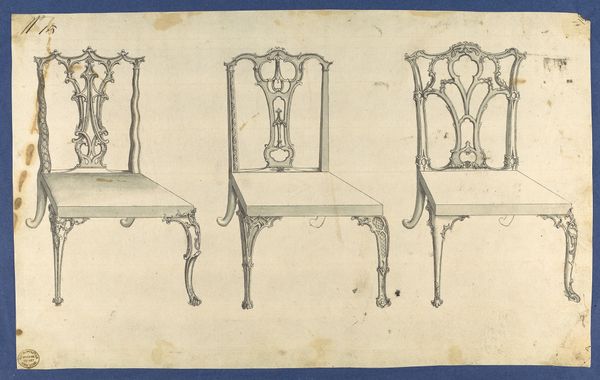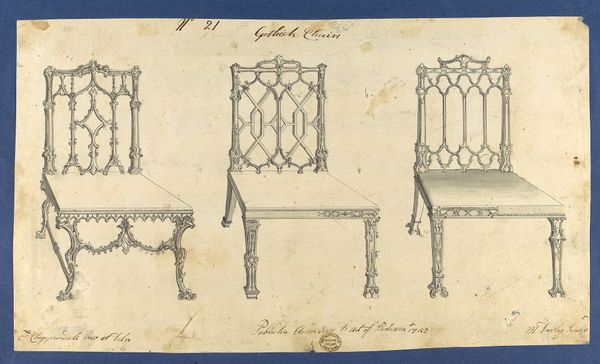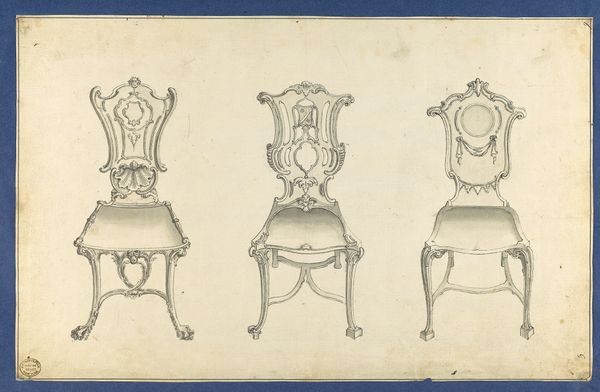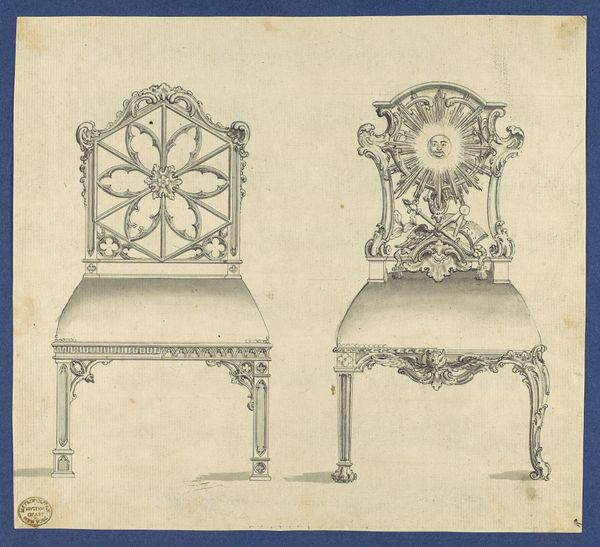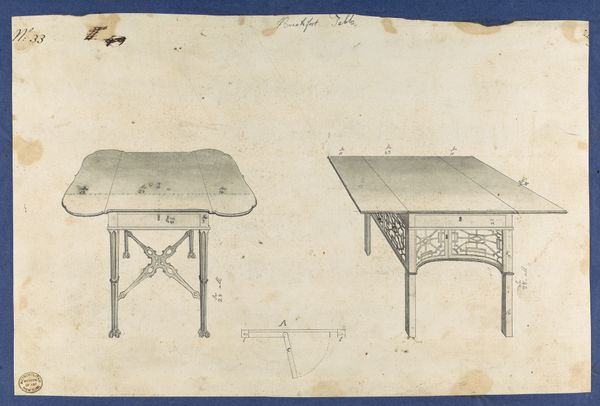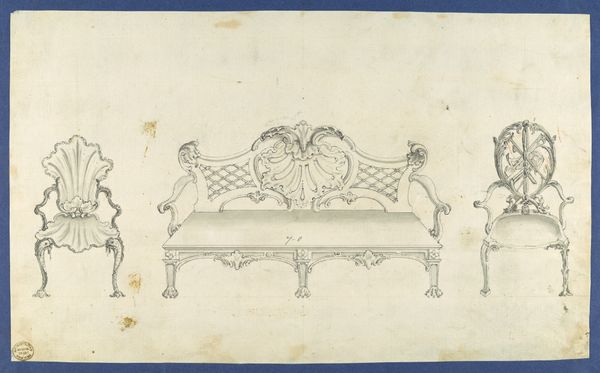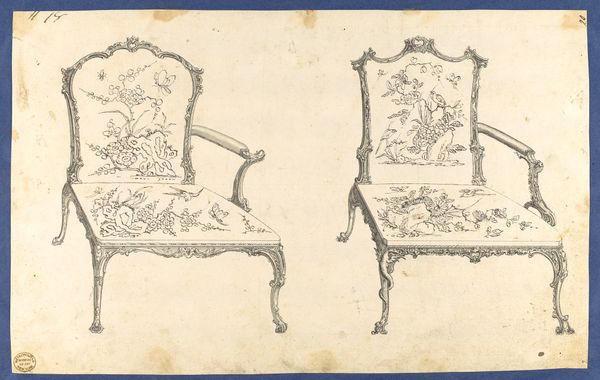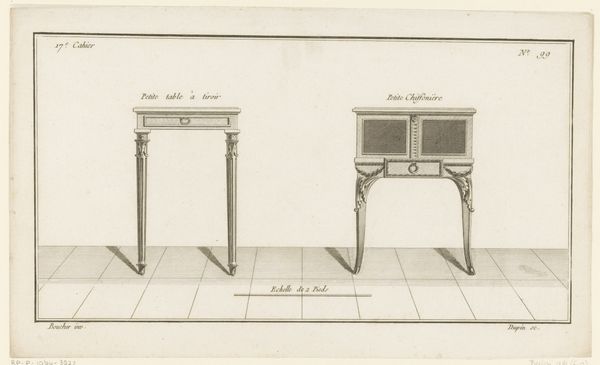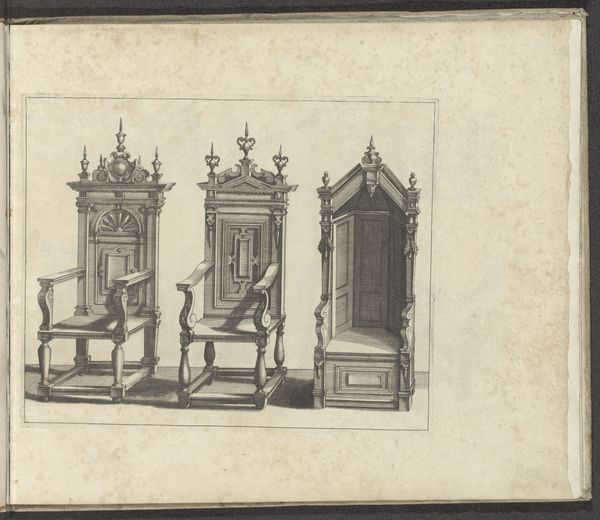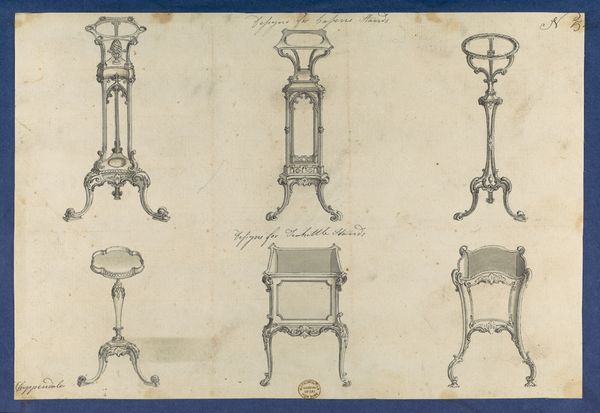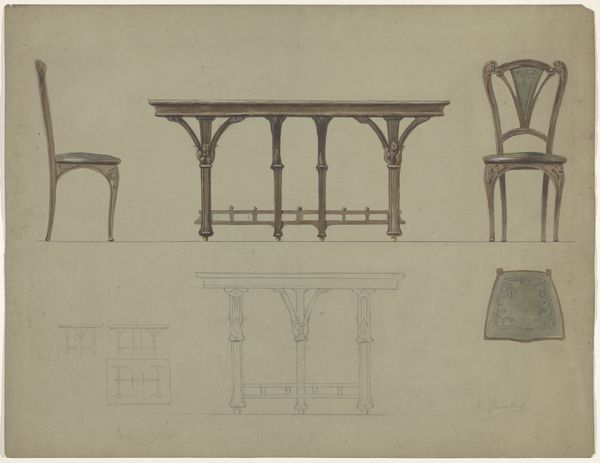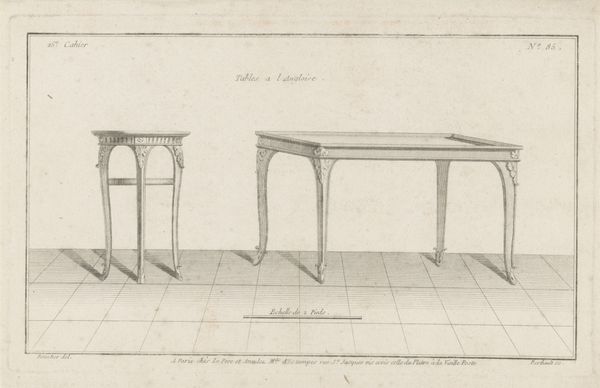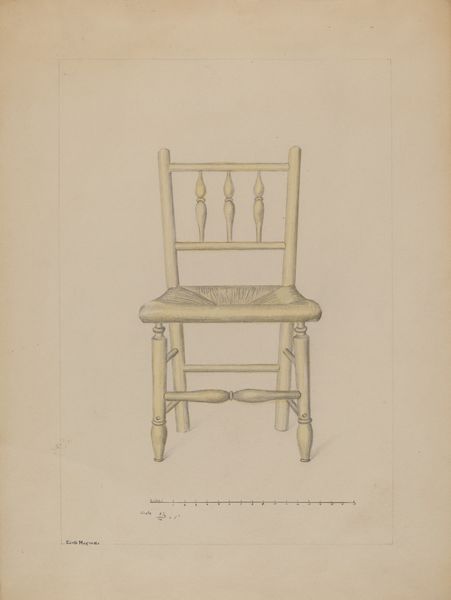
Chinese Chairs, in Chippendale Drawings, Vol. I 1753
0:00
0:00
drawing, print, paper
#
drawing
# print
#
furniture
#
paper
Dimensions: sheet: 8 1/4 x 13 9/16 in. (21 x 34.4 cm)
Copyright: Public Domain
Editor: So, here we have "Chinese Chairs, in Chippendale Drawings, Vol. I" from 1753, attributed to Thomas Chippendale. It’s a drawing or print on paper, and features, unsurprisingly, designs for chairs! I'm struck by the almost architectural quality of these designs. They feel less like furniture sketches and more like blueprints. What jumps out at you? Curator: It’s interesting you say "architectural," because Chippendale, while considered a furniture maker, was also deeply involved in the construction of social spaces. We can see in this drawing the collision of craft production with elite consumption. The Rococo style adapted for British tastes, tinged with an Orientalism informed by trade routes, reveals much about colonial-era material culture. Who was commissioning these chairs, and for what kind of spaces? This is less about form and more about the systems of labor and resource extraction required to manifest these objects. Editor: That makes me think about the labor involved. I hadn’t considered that the ‘Chinese’ style here isn't actually Chinese, but filtered through a European lens. Was there any real understanding of Chinese craft, or was it all surface-level appropriation for consumers? Curator: Appropriation is the operative word. It speaks volumes about power dynamics and trade imbalances of the period. The chairs, if built, were intended for display and use, embodying wealth. Chippendale’s genius wasn't just aesthetic; he successfully tapped into and manufactured desires driven by colonial capitalism. We might consider these designs not just as beautiful objects, but also as documents of unequal exchange and the beginnings of globalized production. What does the paper itself, the material on which this drawing is made, tell us? Editor: Thinking about the paper… it emphasizes that this is a commodity itself, highlighting the stages of production. So this drawing shows not only furniture but the broader economics surrounding its potential construction. Curator: Precisely. The act of drawing and printing itself. It underscores the distance between the design and the final physical object, a gap filled with labour, materials, and the global movement of goods. It also allows mass production. This has certainly given me more to consider. Thank you for highlighting that. Editor: Thank you. Looking at the design through that economic lens completely reshapes my view.
Comments
No comments
Be the first to comment and join the conversation on the ultimate creative platform.
